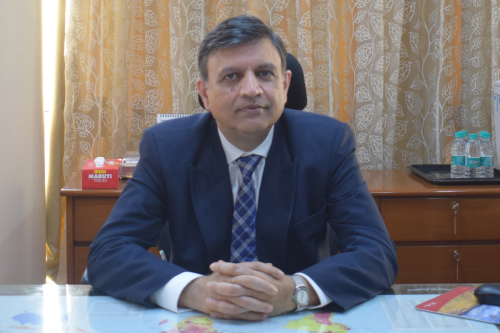

Given the toll that the COVID-19 pandemic has taken on the insurance industry, it’s hardly surprising that reinsurers have faced similar, considerable challenges throughout 2020. Growing losses, paired with a global contraction in premium volumes and extremely low interest rates, have placed significant pressure on the financial performance of many international reinsurers, and with other issues, such as climate change and business interruption rulings looming, the outlook for 2021 remains somewhat bleak.
Read more: Reinsurers near 2021 laden with uncertainty
In these circumstances, it’s refreshing to hear Devesh Srivastava (pictured), chairman-cum-managing director of GIC Re, describe the Indian insurance market as one of untapped potential and growth.
“As the insurance market is growing at a healthy rate here in India – registering growth in classes like health, fire and liability even during COVID-19 – it is assumed that the need for reinsurance will also go up,” Srivastava told Insurance Business.
“Furthermore, there are more insurance companies that are coming into the Indian domestic market, and this, too, will result in reinsurance requirements.”
The Indian insurance market has undergone a massive transformation over the past two decades, since it wasn’t until the turn of the century that private companies were even allowed to operate in the sector. During this time, the life insurance market, for example, has expanded from two state-run life insurers to 23 private enterprises. According to Srivastava, however, “even after 20 years of opening up the insurance sector, there is still a huge uninsured population that is waiting to be tapped.”
“As such, the prospects for life and non-life insurance, and by extension reinsurance, are promising and these areas are expected to grow significantly in the future,” he added.
GIC Re operates in a number of reinsurance sectors in India including life, property and marine. The Indian life reinsurance market is “witnessing intense competition”, in the words of Srivastava, propelled by COVID-19 and a raised awareness of the need for life insurance.
“COVID-19 has made people more anxious about their and their families’ future,” he noted. “While the focus during the initial wave of COVID-19 was primarily towards health insurance, we strongly believe that, post-pandemic, the focus will majorly shift towards life insurance products.”
Given the combination of the pandemic and the younger demographics of the APAC region, Srivastava believes that “the life insurance market will soon witness a sea change” and that “innovation, tailor-made products, and the digitisation of the life insurance market are the major consequences” of COVID-19.
“Insurance has proved to be an instrument of financial stability for families whose life and health have been afflicted due to the pandemic,” he stated.
“In India, with a very low penetration of insurance, the pandemic has motivated some of the uninsured population to consider insurance solutions in times of such calamity, while insurance companies and regulators have risen to the occasion and provided reasonable coverage solutions to the buyers of health and life insurance products. The lesson from this would be that insurance can provide a financial security blanket for COVID-19 survivors and their families.”
Srivastava added that the economic downturn brought about by the pandemic means that “arriving at adequate pricing for life and health policies in the current climate is a challenging task.”
“Solvency requirements for life reinsurers require a review by the regulator since for reinsurers, writing business is very capital intensive,” he stated. “The most important challenge will be to ensure that the customer is willing to accept an adequate price for the insurance product.”
Of course, every cloud has a silver lining, and, when it comes to the pandemic, Srivastava is clear that the increased awareness of the need for insurance has made it an easier sell.
“Government schemes have widened the reach of insurance companies, and if insurers can capitalise on these opportunities, the increased volume of business will benefit GIC Re,” he said.
Srivastava emphasised the need, moving forward, for GIC Re to not be overexposed to a single risk but to nevertheless continue to meet market expectations in what will be a rate-correcting hard market “after years of soft pricing.”
“GIC RE’s business is about 30% international, and this mix of domestic and international business will continue into 2021,” he confirmed.
